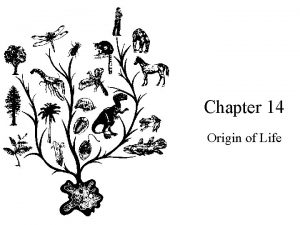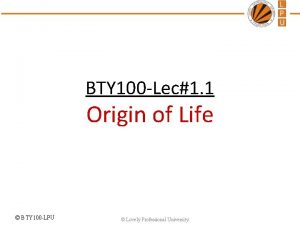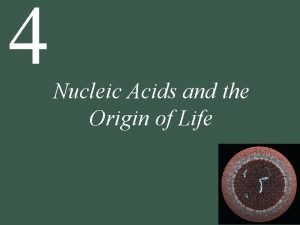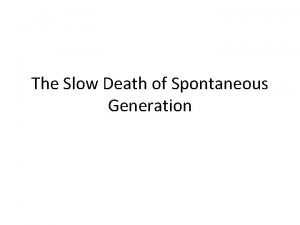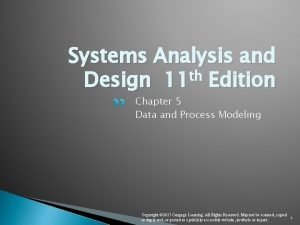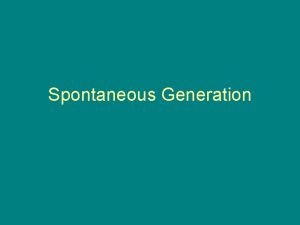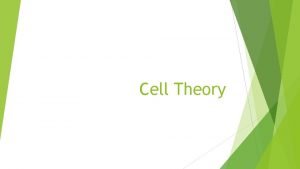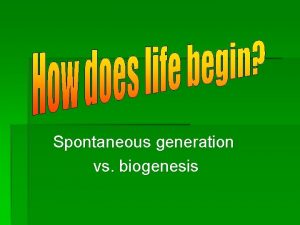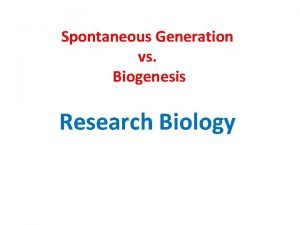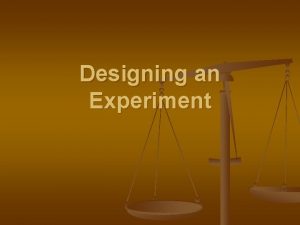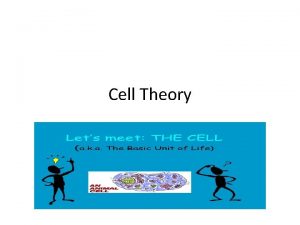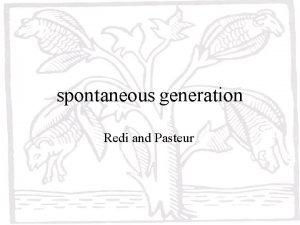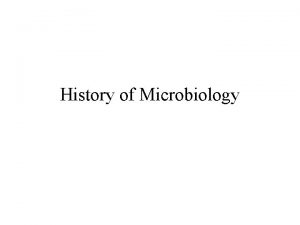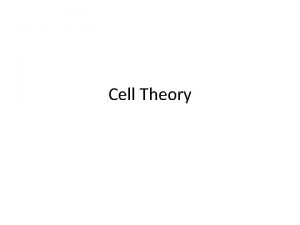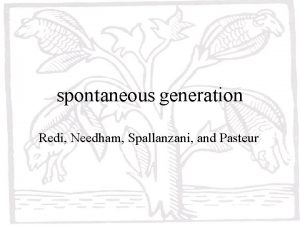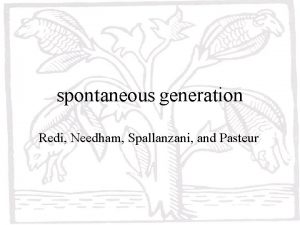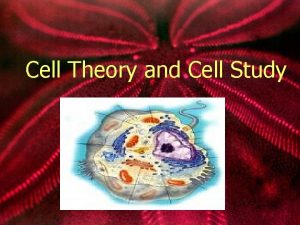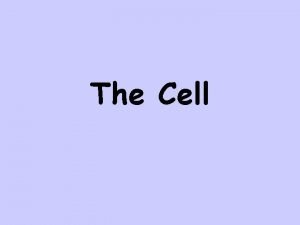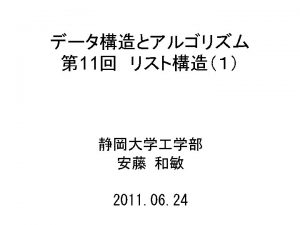Cell Theory Spontaneous Generation What is spontaneous generation




















- Slides: 20

Cell Theory

Spontaneous Generation What is spontaneous generation? Describe (diagram) Redi’s experiment Describe (diagram) Pasteur’s experiment Write a concluding sentence about spontaneous generation. • http: //www. sumanasinc. com/webcontent/ani mations/content/scientificmethod. html • •

Spontaneous Generation. Francesco Redi 1668

• Pasteur’s Experiment 1862 • http: //bcs. whfreeman. com/thelifewire/conte nt/chp 03/0302003. html

Cell Theory • 1. All organisms are made of one or more cell(s) • 2. Cells are the smallest living unit • 3. All cells come from previously existing cells (spontaneous generation)

Characteristics of Life • Respond to the environment • Exchange energy and materials with the environment • Maintain a constant internal environment (known as homeostasis) • Grow and reproduce • Evolve – over a long period of time organisms adapt to their environment

Organization

Organization

Levels of Organization - Atoms make molecules which are the smallest unit of a substance - Molecules make organelles - Organelles make cells - Cells make tissues - Tissues make organs - Organs make organ systems - Organ systems make organisms

- Organisms make up populations Population: 1 species in a particular area - Population make up communities Communities: different populations in an area - Communities make up Ecosystems - Ecosystems make up the Biosphere

Assignment • Label/Colour Animal Cell Diagram

Organelle Function If the school was a cell ……………. because…… 1. Plasma Membrane 2. Nucleus 3. Ribosomes 4. Endoplasmic Reticulum - RER - SER 5. Golgi Apparatus 6. Lysosomes 7. Vacuoles/Vessicles 8. Mitochondria 9. Cytoskeleton X

The Cell • http: //www. johnkyrk. com/Cell. Index. html

Cellular Components a. vacuole/vescicle: storage of substance b. lysosome: intracellular digestion c. ribosomes: protein synthesis d. Golgi complex: processing, packaging and distributing of proteins • e. cytoplasm: fluid substances that houses organelles • •

• f. nucleus: storage of genetic information • g. nucleolus: aids in protein synthesis • h. nuclear membrane: protects contents of the nucleus • i. cell (plasma membrane): regulation of molecules into and out of cells • j. mitochondria: cellular respiration

• Smooth ER: lipid synthesis • Rough ER: synthesis/modification of proteins • Centriole: involved in cell division (animal cells)




If the School was a Cell…. . What would be the…. . 1. Nucleus? 2. Cell membrane? 3. Golgi apparatus? 4. Vacuoles? 5. Lysosomes? 6. Mitochondria? 7. Cytoskeleton?
 Louis lerman experiment
Louis lerman experiment Disproving spontaneous generation
Disproving spontaneous generation Disproving spontaneous generation
Disproving spontaneous generation The slow death of spontaneous generation
The slow death of spontaneous generation Spontaneous generation in data flow diagram
Spontaneous generation in data flow diagram Whats spontaneous generation
Whats spontaneous generation What is data and process modeling
What is data and process modeling Whats spontaneous generation
Whats spontaneous generation Spontaneous generation vs biogenesis
Spontaneous generation vs biogenesis Aristotle spontaneous generation
Aristotle spontaneous generation John needham experiment main idea
John needham experiment main idea The scientist mathias schleiden studied _______ in ______.
The scientist mathias schleiden studied _______ in ______. First generation antipsychotics
First generation antipsychotics We worship you hallelujah
We worship you hallelujah Cell city project animal cell
Cell city project animal cell Denuding tower
Denuding tower Prokaryotic cell vs eukaryotic cell
Prokaryotic cell vs eukaryotic cell Prokaryotic and eukaryotic cells
Prokaryotic and eukaryotic cells Difference of animal cell and plant cell
Difference of animal cell and plant cell Concentration cell definition
Concentration cell definition Dry cell vs wet cell
Dry cell vs wet cell
